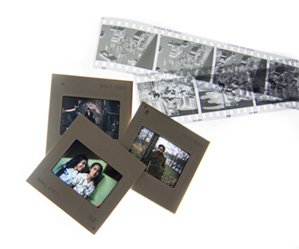
Your feedback and comments are appreciated. See Contact page for e-mails.
Camera Sense Archives
APRIL 2015
Book review
iPad software
Movie review
Underwater dual-use camera review
Photo commentary
Book review
PhotoTech commentary
The Interview, movie review
Photo enhancement or management
MAY 2015
Photo Tech commentary
Photo/Art commentary
Camera review
TV series review
JUNE 2015
JULY 2015
AUGUST 2015
SEPTEMBER 2015
OCTOBER 2015
NOVEMBER 2015
DECEMBER 2015
Film Again, Film Again, Jiggety Jig
by Richard Rivera
The other day I heard a photographer extolling the virtues of shooting with film. He was experimenting by shooting film and working “old school” with a manual camera—no autofocus, no LCD on the back for instant feedback, no 6 frames-per-second burst, and no light meter.
I have always enjoyed his work, and admire his current approach. Clearly, the experience of getting back-to-basics was invigorating for him. He was having a blast. He used a simple approach of presetting all of the variables, such as zone focus aperture and a single shutter speed, so that it would allow him to concentrate solely on his subject.
The thought of once again picking up my manual camera and shooting film made me shudder. Literally. For me it would certainly be a regressive experience.
Over the years I have shot hundreds of rolls of film, 35mm and 120, and sheet film. And although the notion of actually shooting film has a romantic appeal I vividly recall the sting of the very long process of developing black & white—the stringent temperature requirements, the wash cycle of paper to ensure that every bit of fixer was removed, the inadvertent curling of the paper, not to mention the cost of film, the cost of water, the polluting chemicals, the darkroom fumes despite vents, and the lack of flexibility in film ISO (or ASA for those old enough to remember). The alternative would have been to send everything to a lab which would have been much costlier, and would not have handled my film with the same care.
Thankfully, those limitations have been removed. The move to digital has dramatically shifted time-management to make me more productive as a photographer. By “more productive” I mean that I can spend more time being creative rather than doing mundane tasks a machine could do, like processing film.
I believe that what invigorated my fellow photographer was the almost Zen-like focus he was able to achieve by paring down to the essentials: giving his full attention to the subject instead of being distracted by bells and whistles. An admirable goal. But I would suggest that if quieting the mind to the external chatter of EVF readouts, histograms, and autofocus areas are the issue, there are ways to address that in the digital world: turn it off. Most cameras allow you to turn off image auto-review, turn off the LCD display and alerts, and work completely in manual focus. A few cameras will also shoot in complete silence.
I understand that for most photographers the challenge of paring down is not an easy one. When we worked with film we unconsciously adhered to its imposed restrictions. With limited choices things were simpler. Today, cameras have become technological marvels with a myriad of choices prompting us to decide. Change ISO? Color, or black & white, or automatically lighten shadows? Rely on autofocus, continuous or single, or ensure crisp image through manual focus? What about AF modes or AF areas? Distortion control, off or on? And so on.
The quest today is how do we find the middle-ground? How do we sidestep the distractions of technology in a way that maximizes our tools but minimizes their intrusion into the creative process.
The technologies of the digital age require a greater degree of self-awareness on the part of photographers to offset its extensive freedoms, so that we use the tools rather than being at their mercy.
One thing has become clearer for me over the years of creating images is that photography is always a matter of compromises and trade-offs. For example, carrying fewer lenses means a simpler approach, faster setup speed, and considerably less weight, but it might also mean fewer options to create the image you envision. Or choosing to work with smaller sensor cameras will greatly reduce weight and overall cost of gear, but will they provide the image quality and dynamic range you need? With film cameras and corresponding formats it was the same dilemma although with a different set of specifics, i.e., 35mm, medium format, or 4x5. And today’s ultimate trade-off: choosing the flexibility of digital versus the archival qualities of film.
I believe in creative freedom of expression for artists. Whether a photographer works with film, digital, polaroid’s, photograms, etc., it doesn’t really matter. Working with a different format or camera can help one break out of a creative rut, but the most important questions are, will this process contribute to making me a better photographer, will it broaden my vision and bring new insight? And that my friends, requires quite a bit more thought . . .
May 28, 2015

Copyright © 2015 Richard Rivera & Rivera Arts Enterprises All rights reserved. No copying or reproduction of any kind without express written permission from Richard Rivera
Legal Disclosure Camera Sense and Eagles of New York are trademarks of Elk Partners LLC